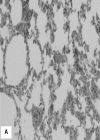Aggressive management of surgical emergencies
- PMID: 17132308
- PMCID: PMC1963814
- DOI: 10.1308/003588406X149318
Aggressive management of surgical emergencies
Abstract
Increasing evidence suggests that two factors significantly influence outcome in a surgical emergency - premorbid health and the degree of inflammation during the first 24 h following trauma. Repeat observations suggest that the depth of post-trauma immunoparalysis reflects the height of early inflammatory response. Administration to surgical emergencies, as was routine in the past, of larger amounts of fluid and electrolytes, fat, sugar and nutrients seems counterproductive as it increases immune dysfunction, impairs resistance to disease and, in fact, increases morbidity. Instead, strong efforts should be made to limit the obvious superinflammation, which occurs during the first 24 h after trauma and, thereby, reduce the subsequent immunoparalysis. Several approaches show efficacy in limiting early superinflammation such as strict control of blood glucose, avoidance of stored blood when possible, supply of antioxidants, live lactic acid bacteria and plant fibres. This review focuses mainly on use of live lactic acid bacteria and plant fibres, often called synbiotics. Encouraging experience is reported from clinical trials in liver transplantation, severe pancreatitis and extensive trauma. Immediate control of inflammation by enteral nutrition and supply of antioxidants, lactic acid bacteria and fibres is facilitated by feeding tubes, introduced as early as possible on arrival at the hospital.
Figures







Similar articles
-
Bio-ecological control of acute pancreatitis: the role of enteral nutrition, pro and synbiotics.Curr Opin Clin Nutr Metab Care. 2005 Sep;8(5):557-61. doi: 10.1097/01.mco.0000170758.78737.90. Curr Opin Clin Nutr Metab Care. 2005. PMID: 16079629 Review.
-
Bio-ecological control of perioperative and ITU morbidity.Langenbecks Arch Surg. 2004 Apr;389(2):145-54. doi: 10.1007/s00423-003-0425-z. Epub 2003 Nov 7. Langenbecks Arch Surg. 2004. PMID: 14605886 Review.
-
[Early jejunal nutrition with combined pre- and probiotics in acute pancreatitis--prospective, randomized, double-blind investigations].Magy Seb. 2003 Feb;56(1):3-8. Magy Seb. 2003. PMID: 12764986 Clinical Trial. Hungarian.
-
[Enteral nutrition: past and future].Nutr Hosp. 2004 Mar-Apr;19(2):110-20. Nutr Hosp. 2004. PMID: 15049413 Spanish.
-
[Perioperative enteral nutrition].Chir Ital. 2005 May-Jun;57(3):293-9. Chir Ital. 2005. PMID: 16231816 Review. Italian.
Cited by
-
Effects of probiotic treatment on the prognosis of patients with sepsis: a systematic review.World J Emerg Med. 2025;16(1):18-27. doi: 10.5847/wjem.j.1920-8642.2025.018. World J Emerg Med. 2025. PMID: 39906103 Free PMC article. Review.
References
-
- Sautner T, Fugger R, Götzinger P, Mittlbock M, Winkler S, Roth E, et al. Tumour necrosis factor-α and interleukin-6: early indicators of bacterial infection after human orthotopic liver transplantation. Eur J Surg. 1995;161:97–101. - PubMed
-
- Bengmark S. Bioecological control of inflammation and infection in critical illness. Anesthesiol Clin North Am. 2006;24:299–323. - PubMed
-
- Shirabe K, Matsumata T, Shimada M, Takenaka K, Kawahara N, Yamamoto K, et al. A comparison of parenteral hyperalimentation and early enteral feeding regarding systemic immunity after major hepatic resection – the results of a randomized prospective study. Hepatogastroenterology. 1997;44:205–9. - PubMed
Publication types
MeSH terms
LinkOut - more resources
Full Text Sources
Medical
Miscellaneous

